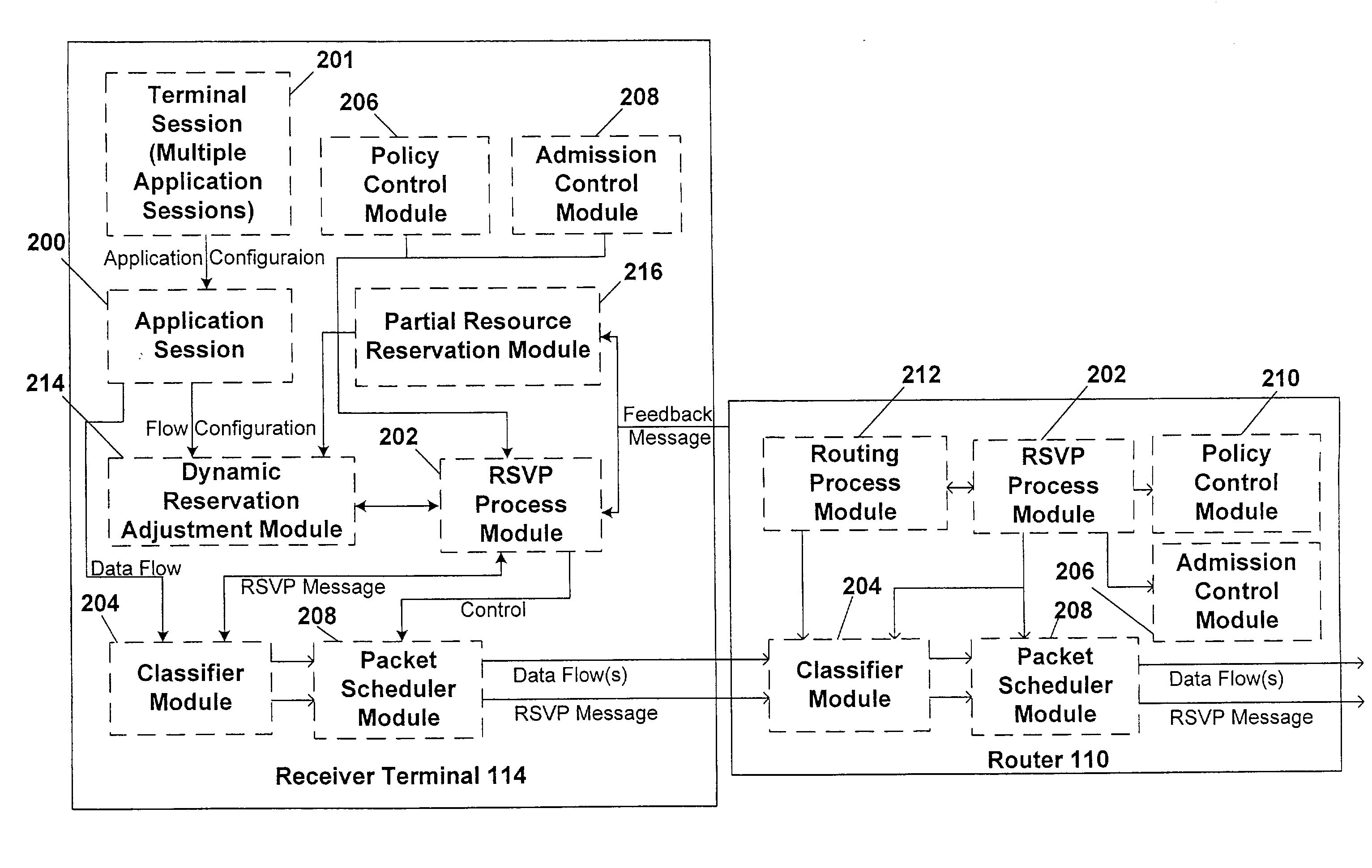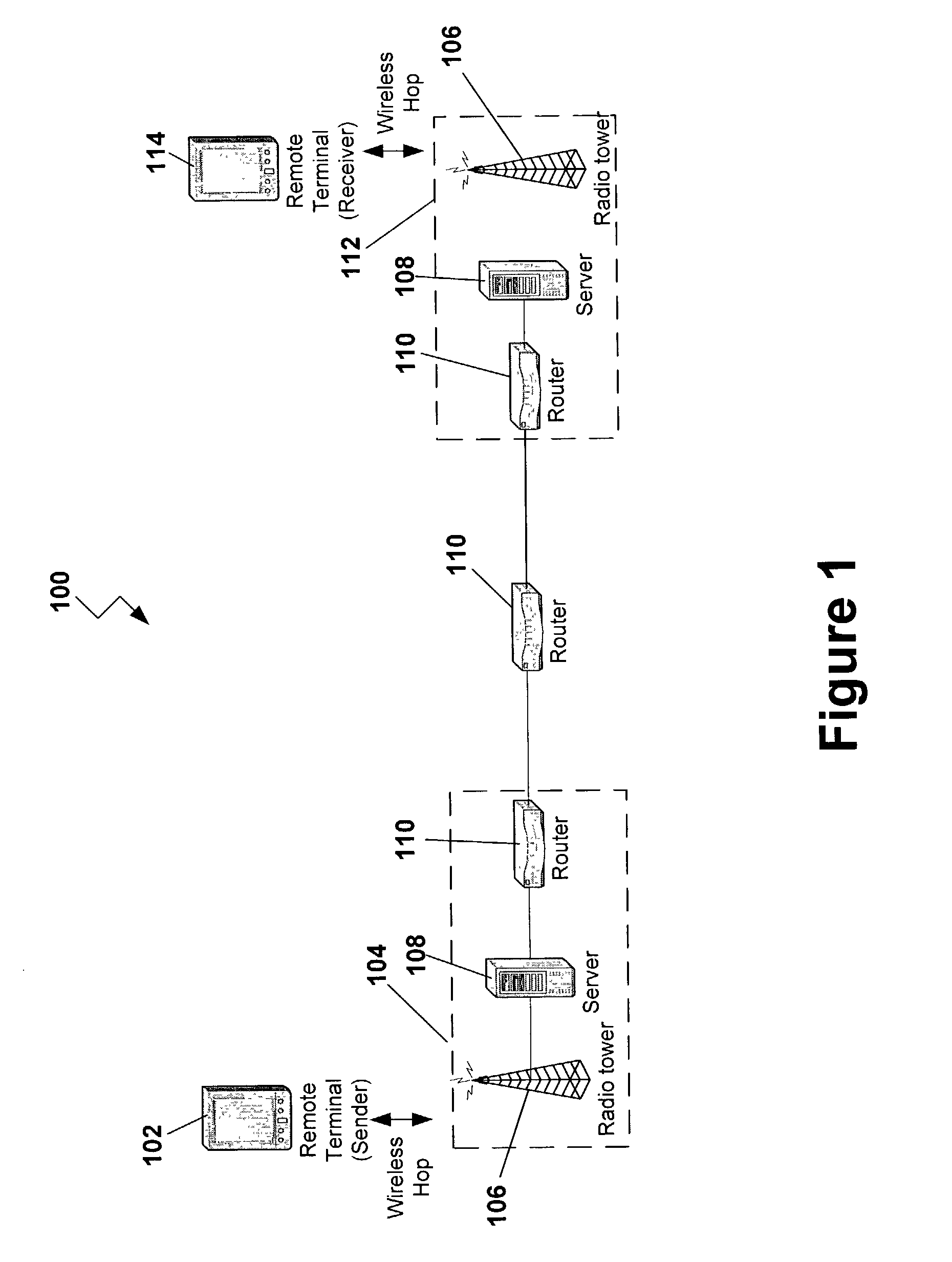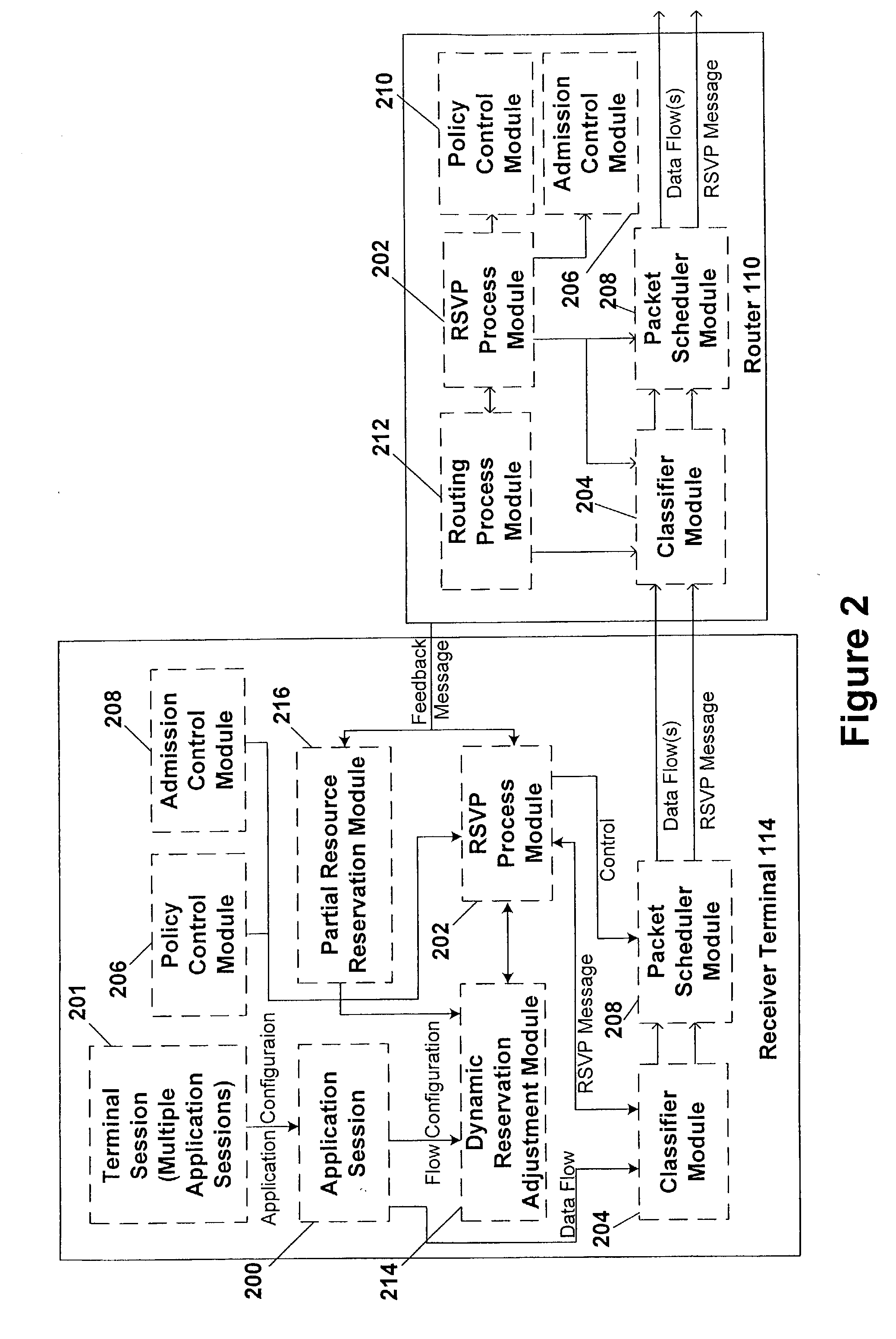Terminal-based resource reservation protocol
a resource reservation and resource technology, applied in the field of terminal-based resource reservation protocol, can solve the problems of inability to guarantee the overall session performance of the terminal (or application), and the current scheme of resource reservation at the router does not solve the session-based reservation problem, so as to achieve less optimal reservation
- Summary
- Abstract
- Description
- Claims
- Application Information
AI Technical Summary
Benefits of technology
Problems solved by technology
Method used
Image
Examples
Embodiment Construction
[0032] Referring to FIG. 1, an embodiment of the present invention discloses a terminal-based resource reservation protocol for use in a data network 100. The data network 100 includes a sender terminal or host 102 that is connected with a first access network 104. The first access network 104 illustrated in FIG. 1 is a wireless access network that includes a base station 106 that is connected to an access network server 108. The access network server 108 is connected with at least one router 110. The routers 110 are connected with a second access network 112 that generally includes the same components and applications of the first access network 104. The second access network 112 is connected to a receiver terminal 114.
[0033] The data network 100 illustrated in FIG. 1 is set forth as a wireless data network for illustrative purposes only. The data network 100 may be a wired data network in other embodiments of the present invention. The first and second access networks 104, 112 cou...
PUM
 Login to View More
Login to View More Abstract
Description
Claims
Application Information
 Login to View More
Login to View More - R&D
- Intellectual Property
- Life Sciences
- Materials
- Tech Scout
- Unparalleled Data Quality
- Higher Quality Content
- 60% Fewer Hallucinations
Browse by: Latest US Patents, China's latest patents, Technical Efficacy Thesaurus, Application Domain, Technology Topic, Popular Technical Reports.
© 2025 PatSnap. All rights reserved.Legal|Privacy policy|Modern Slavery Act Transparency Statement|Sitemap|About US| Contact US: help@patsnap.com



